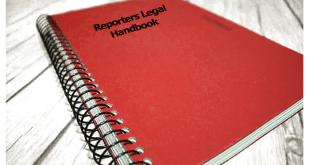6A: The Origins Of Privacy Law
Invasion of privacy is a tort of recent vintage. It springs from an influential law review article written around the turn of the century, and more recently from a 1960 law review article by Dean Prosser. In that article Prosser identified four types of invasions of privacy:
1) Unreasonable intrusion upon another’s privacy;
This tort creates liability for intentional intrusion in another’s private affairs if the intrusion would be highly offensive to a reasonable person. An example would be a news photographer sneaking into a hospital sick room to photograph a non-public figure with a rare disease, after that person has refused an interview.
2) Commercial appropriation of another’s name or likeness;
This is the most common privacy tort and one likely to be accepted by the Nevada Supreme Court. It involves use of someone’s name or likeness for commercial benefit. The tort does not apply to incidental use such as mention of newsworthy activities, nor is the value of a likeness appropriated if the use is not to take advantage of someone’s reputation or prestige.
3) Unreasonable publicity given to another’s private life;
This tort involves publicity concerning someone’s private life if it would be highly offensive to a reasonable person, and it is not of legitimate concern to the public. It is certainly constricted by constitutional considerations, Cox Broadcasting Co. v. Cohn, 420 U.S. 469 (1975), and by the terms of the Restatement does not apply to anything which happens “in the public eye.” Thus, a person photographed in a public place cannot complain of having the photo published in the newspaper.
4) Publicity placing another in a false light before the public.
Because it so closely parallels defamation, false light is the most controversial privacy tort. A number of states have entirely rejected it and Nevada has not specifically approved it. It requires publicity placing another in a false light if the publicity would be highly offensive and if the publisher knew or should have known of the falsehood. A strong argument can be made that because the tort is so closely related to defamation, the privileges of defamation law, including the retraction statute, NRS §41.331, et seq, apply. See, Fellows v. National Enquirer, Inc. 228 Cal. Rptr. 215, 721 P.2d 97 (Cal. 1985).
6B: Privacy Law In Nevada
In Montesano v. Donrey Media Group, 99 Nev. 644, 668 P.2d 1081 (1983), the Nevada Supreme Court found that it had previously impliedly recognized the existence of an action for invasion of privacy in Norman v. City Of Las Vegas, 64 Nev. 38, 177 P.2d 442 (1947). Norman, however, preceded Dean Prosser’s analysis, supra. It recognized the existence of some sort of “right to be let alone,” but did not deal at all with the elements discussed by Prosser. Thus, while the Montesano Court did specifically adopt the “third leg” tort (publicity given to private life), it has not and may not necessarily approve the other privacy torts found in Section 652 of the Restatement.
6C: Avoiding Invasions Of Privacy
The basic principle of accuracy applies with equal force here as it does in defamation. In addition, when dealing with an event which would clearly be embarrassing to the average person and which is not necessarily newsworthy, give the story a second look. It may be appropriate to discuss the matter with your Editor and your lawyer. To the extent that you make a reasoned decision to print a story because you believe it to be of legitimate interest to the public, you are probably going to have a defense to an invasion of privacy action.
6D: Dealing With Invasions Of Privacy
If someone complains of an invasion of privacy, their complaint may be coupled with a retraction demand grounded in defamation. If a retraction is appropriate, it may provide a defense to any false light claim.
In addition, keep in mind that in many instances all someone wants is a private apology. If, after consulting counsel, you believe an invasion of privacy has occurred, an apology may be the most appropriate remedy. That apology, however, should be reviewed in advance by your lawyer so that it contains no admissions which might be damaging in a lawsuit.
 Nevada Press Association The best in Nevada journalism since 1924
Nevada Press Association The best in Nevada journalism since 1924


